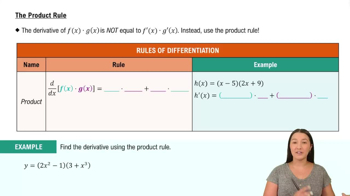Textbook Question
The following equations implicitly define one or more functions.
c. Use the functions found in part (b) to graph the given equation.
y² = x²(4 − x) / 4 + x (right strophoid)
 Verified step by step guidance
Verified step by step guidance Verified video answer for a similar problem:
Verified video answer for a similar problem:



 5:14m
5:14mMaster Finding The Implicit Derivative with a bite sized video explanation from Patrick
Start learning